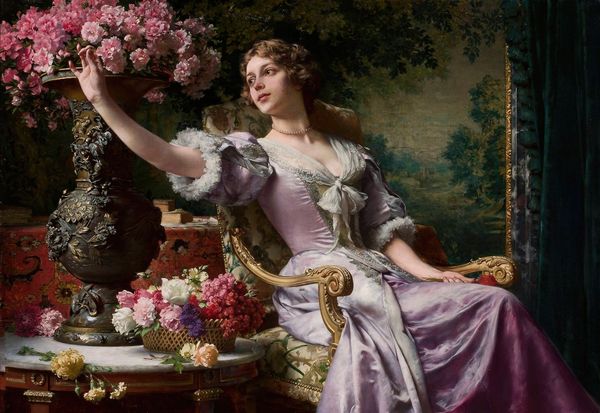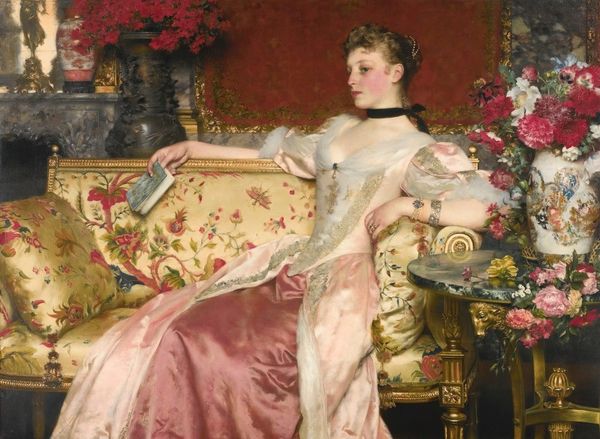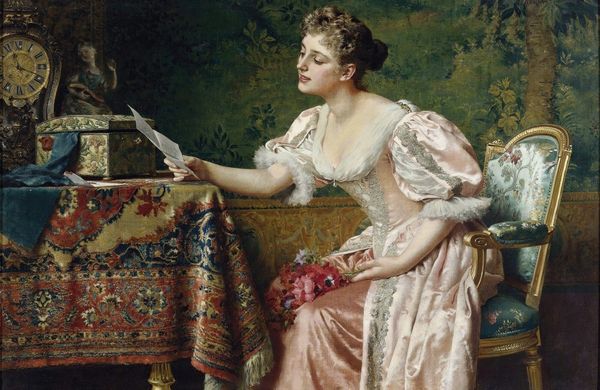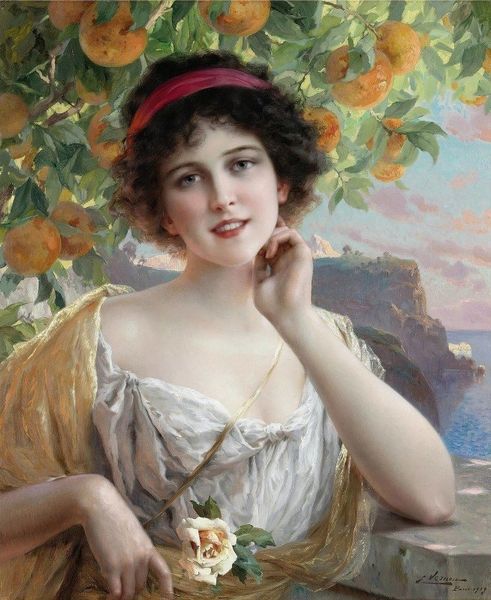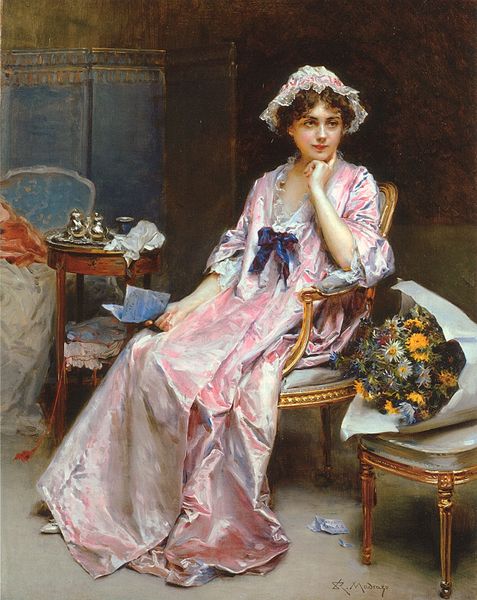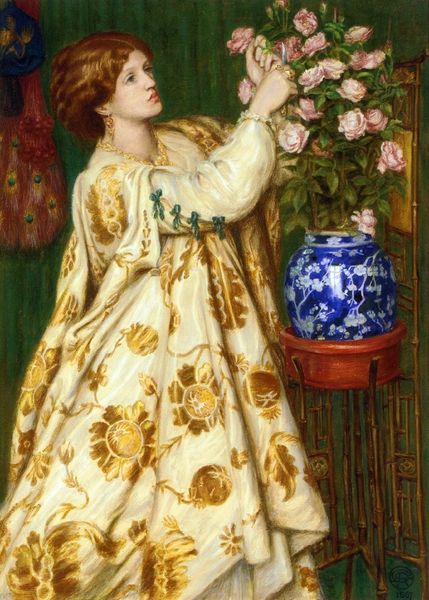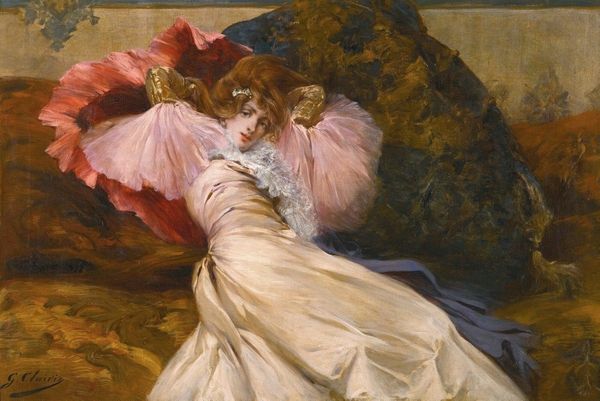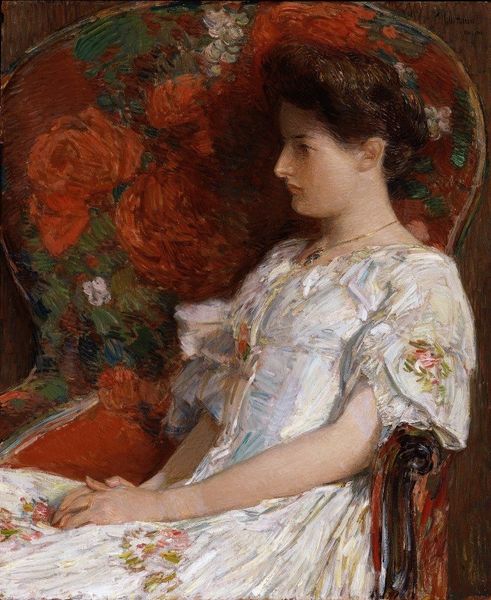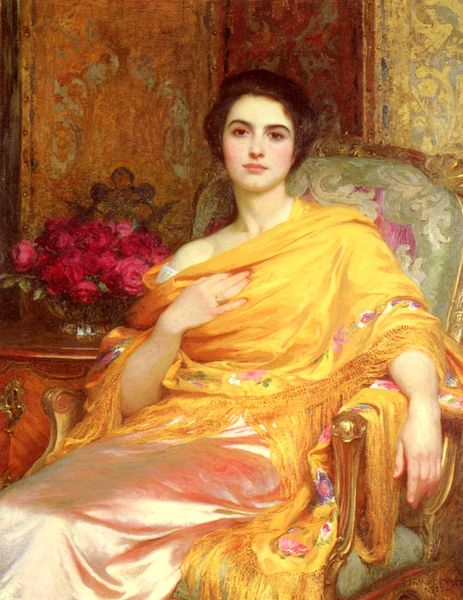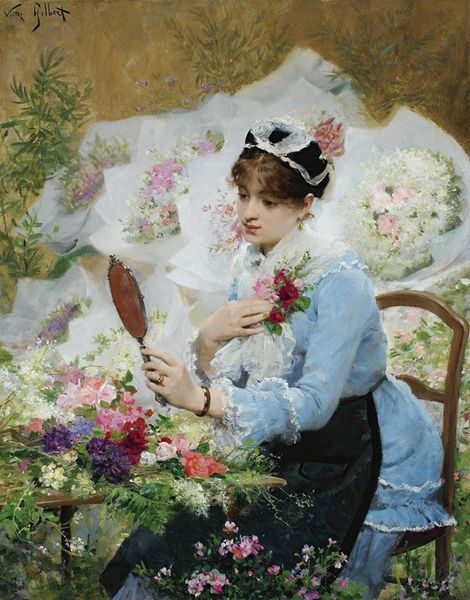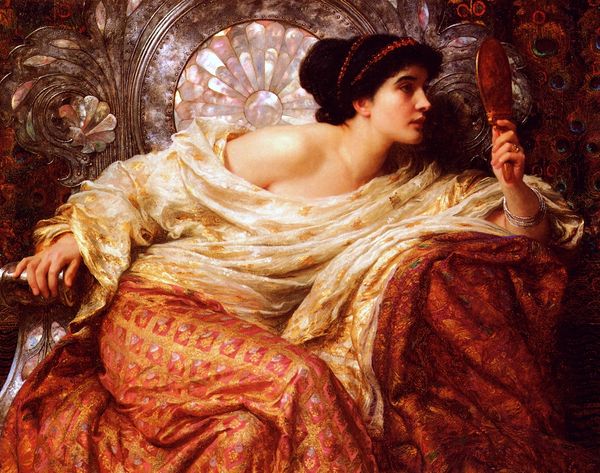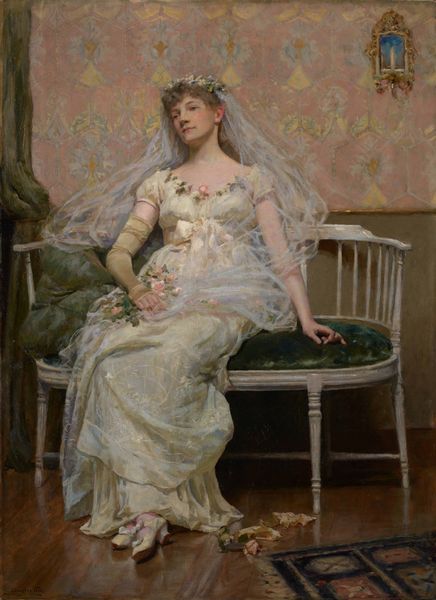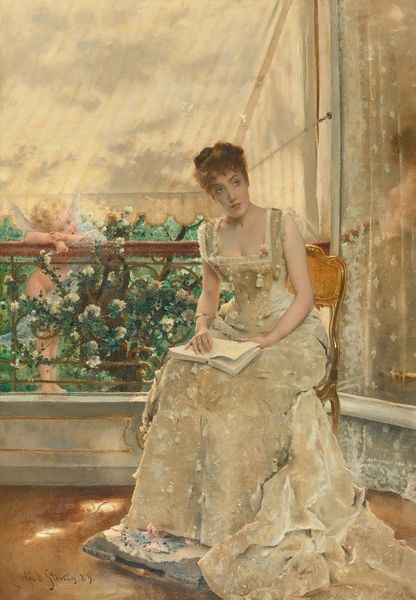
Copyright: Public Domain: Artvee
Curator: Władysław Czachórski’s “The Blossom of Youth,” completed in 1898, strikes me as an exemplary illustration of Academic art’s penchant for idealized beauty and sentimentality. What are your immediate impressions? Editor: It smells of heavy materials, and labor—those flowers weren’t delivered by stork. You have to admire the sheer material abundance depicted: silk, oil paint, the imported blooms—and then consider what was sacrificed in labour and materials to build the entire pictorial reality on this canvas. Curator: Absolutely. Consider the interplay between the figure and her setting. The woman’s refined features and elaborate attire are mirrored and complemented by the meticulous detail given to the floral arrangement and the subtle landscape background. The painting is very intentional: there is nothing accidental. How does the painting invite you, as the viewer, into this artificial space? Editor: It is seductive, in that classical Capitalist way: come consume all the pleasures we are about to bestow. But, more prosaically, what I wonder about is the labour—the invisible hands—that assembled those flowers, constructed the garment’s sumptuous textiles, that prepared the pigments to construct the oil. Can this reality truly mask labour by overemphasizing aesthetic presentation? Curator: An intriguing point! Indeed, one can see the materials of her garment acting like an allegory of the surface of the work itself, a type of alluring veil—something intended for consumption but also artful concealment. The application of paint, its sheer density, is worth observing, to the detriment of all those labour considerations. What do you see in the composition itself? Editor: Let's linger on that pigment, shall we? Think of the processes involved—minerals mined, ground, mixed, traded. Oil pressed and purified. The sheer material history embedded in each brushstroke transforms our reading. If anything, there are worlds contained in the vase itself that exceed our own. Curator: Certainly, you’re right about this density being world-making in itself. When you fixate upon the process of the painting and not the idealized forms, you are able to consider how artists during this time period pushed the traditional values in academic art through the commodification of artistic production. That seems incredibly vital. Editor: To think through that commodity exchange, to understand its implications in our current society. That's where meaning truly resides for me in Czachórski's vision. Curator: Perhaps our divergent interpretations lead us, oddly enough, toward similar questions of beauty’s manufacturing. Editor: Well said. The work is less about eternal grace, then, and more a commentary of grace at a price.
Comments
No comments
Be the first to comment and join the conversation on the ultimate creative platform.
